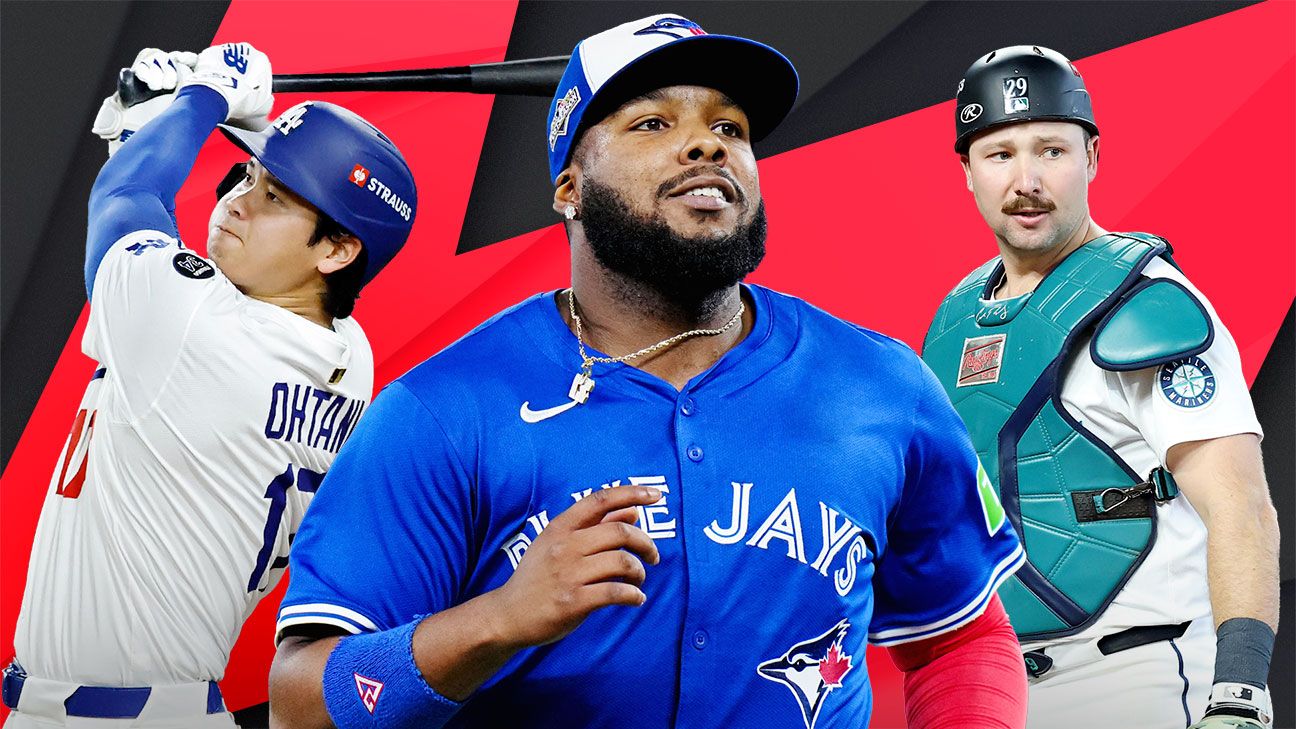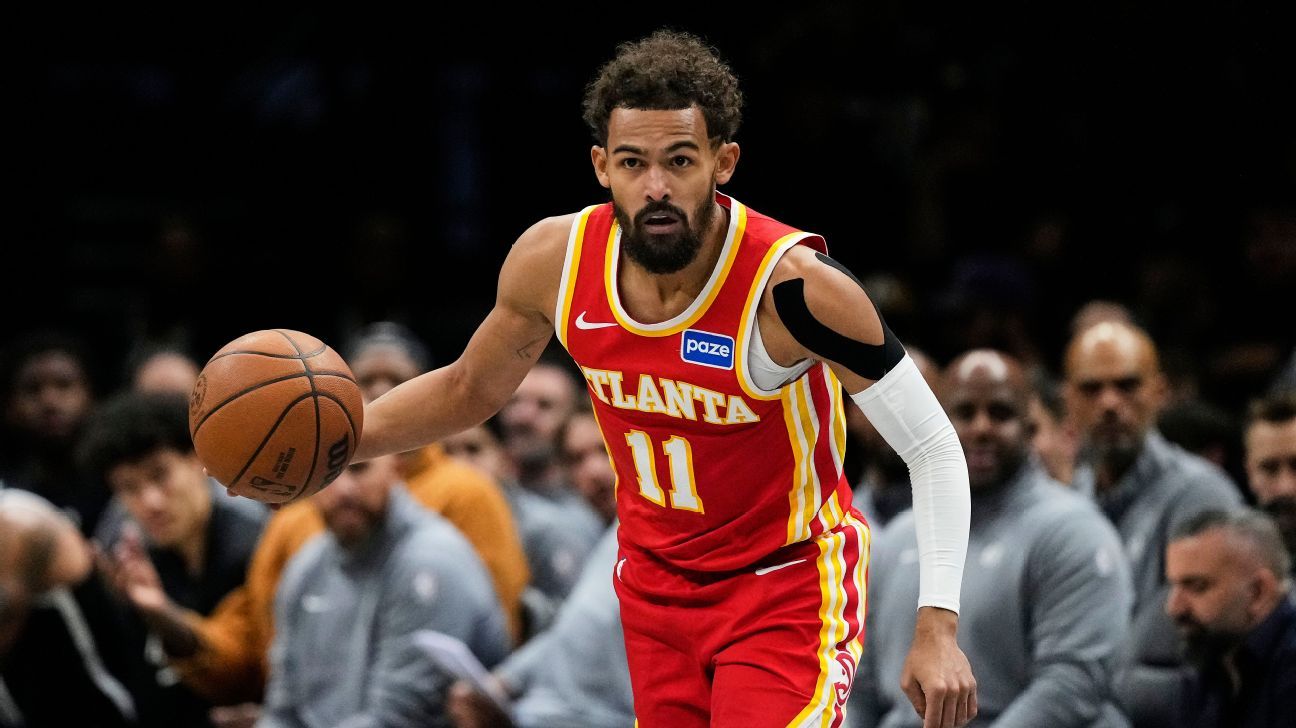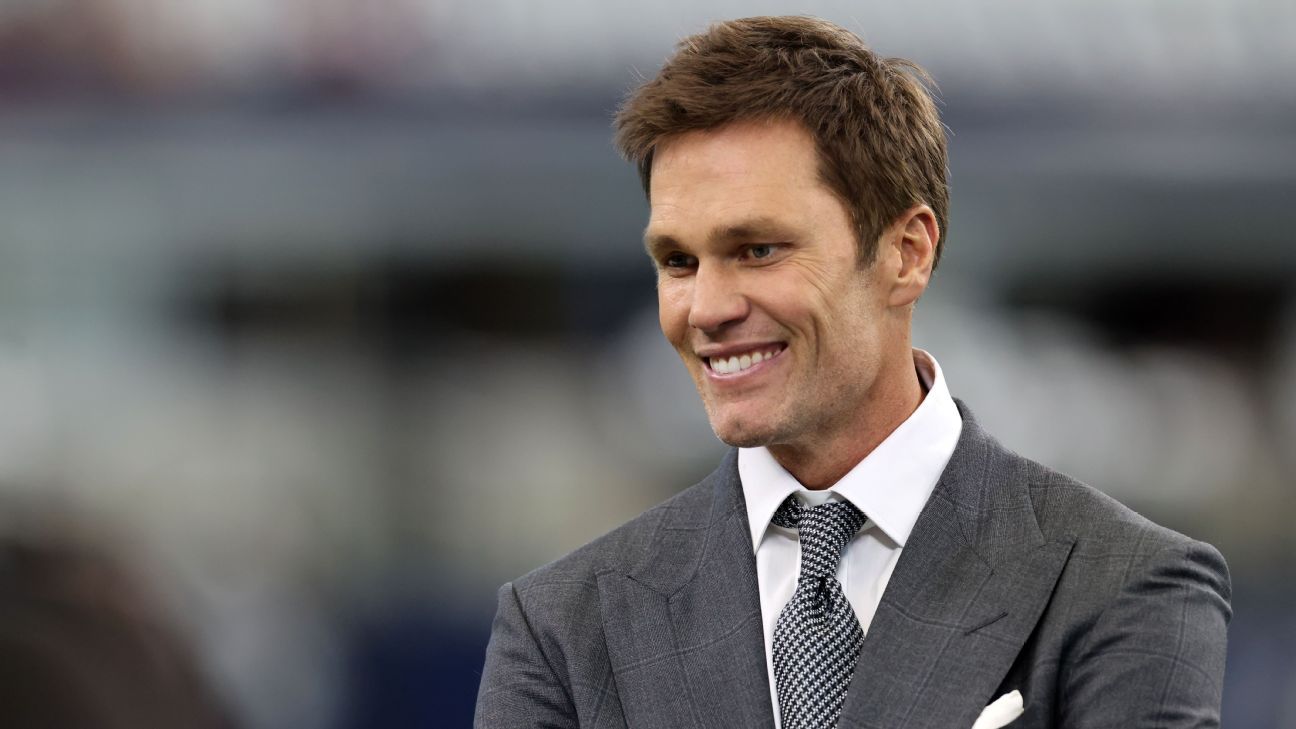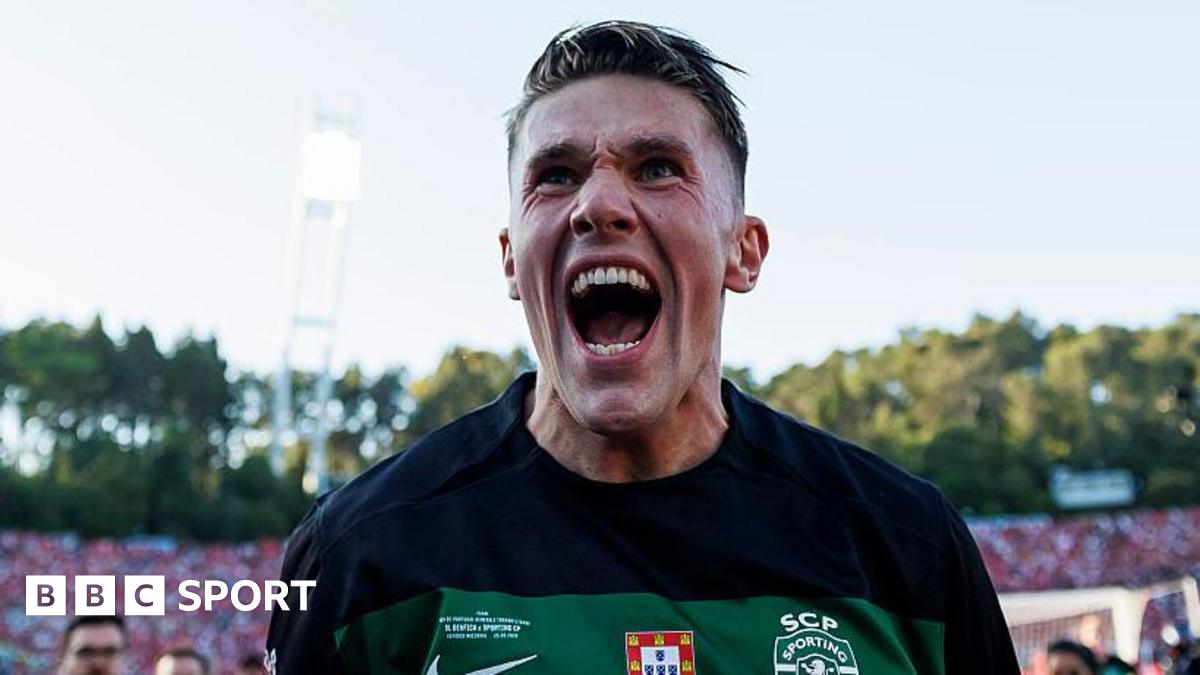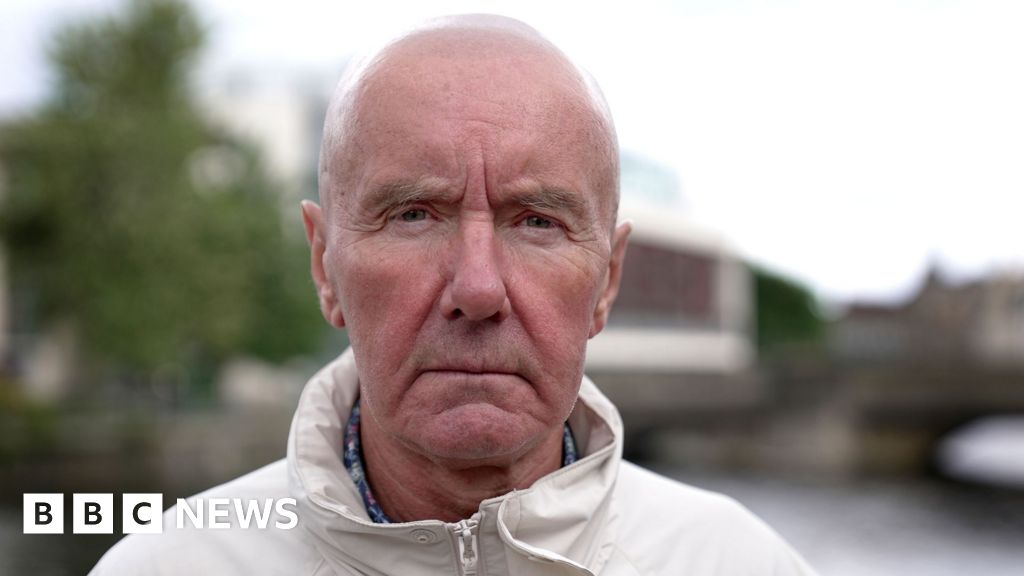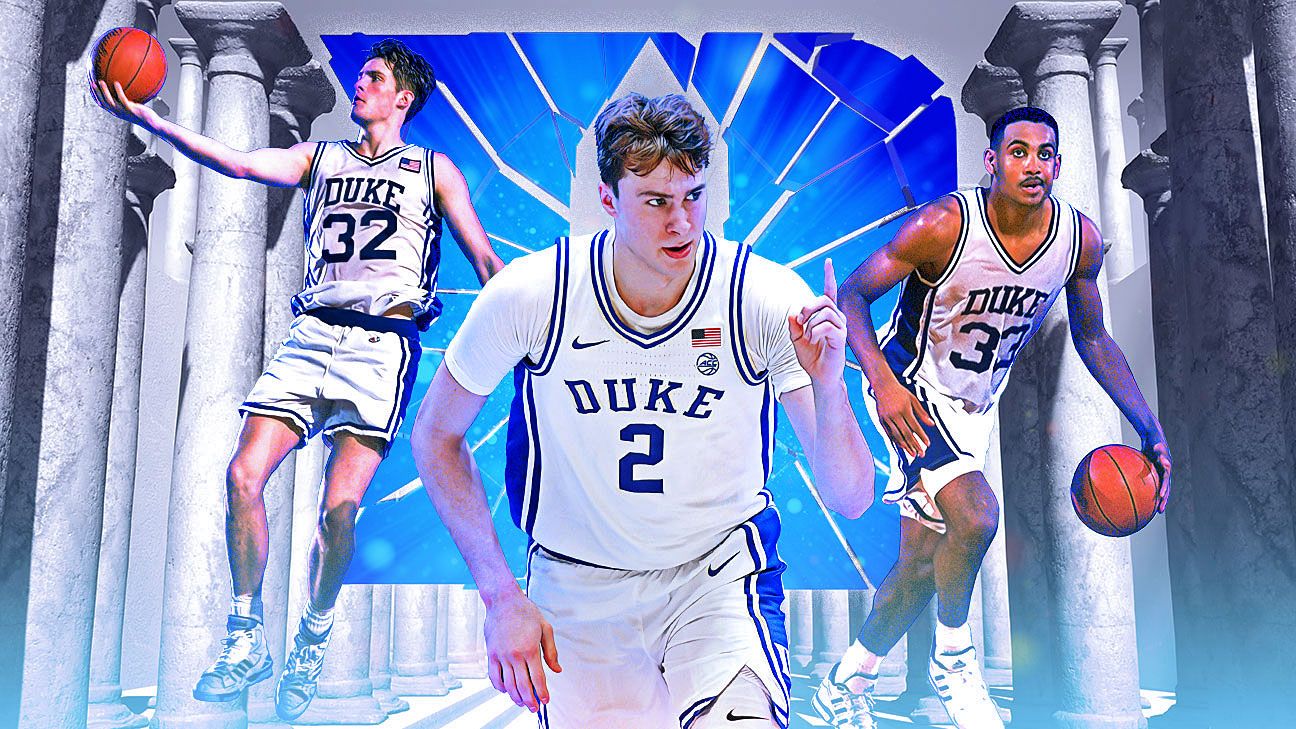
Ryan HockensmithAug 11, 2025, 08:30 AM ET
- Ryan Hockensmith is a Penn State graduate who joined ESPN in 2001. He is a survivor of bacterial meningitis, which caused him to have multiple amputation surgeries on his feet. He is a proud advocate for those with disabilities and addiction issues. He covers everything from the NFL and UFC to pizza-chucking and analysis of Tom Cruise's running ability.
KHAOS IS EVERYWHERE.
It's the second round of a one-sided UFC fight between Khaos Williams and Andreas Gustafson, who is a considerable underdog. Still, Gustafson manages to control every second of the bout, and now, Williams' head is pouring blood.
The two men rumble all over the 30-foot wide Octagon, and Williams' head never really stops bleeding. There's blood spattered all over the canvas in a way that forensic investigators could retrace the entire fight. But there's also blood all over Gustafson's gloves and body, and some is even dripping down the posts on the side of the Octagon.
When the fight is over and Gustafson gets his hand raised, the lights go down and the ESPN broadcast goes to commercial. But inside the Prudential Center in Newark, New Jersey, two men hustle into the cage. They're wearing black pants, black UFC shirts and black rubber gloves as they try to deal with what looks like a crime scene. They drop down to the ground with white towels and try to sop up all of the blood.
The canvas is grippy, not slippery. That's why fighters often spit water all over their feet in their corner before the fight, so that they aren't stuck in place. The two UFC workers towel up as much blood as they can and let the rest absorb into the canvas. Ideally, a Williams-Gustafson bloodbath happens in the final fight of the evening, or at least closer to midnight of such a big PPV event. In this case, it's only 8:30 p.m., with eight more fights to go over the next five hours, and the cage is a deep red mess.
But the two workers are relentless. One scrubs a spot with a towel, then the other comes over and scrubs some more. The canvas cannot be completely cleaned; every UFC event produces a unique, stained canvas by the end of the night that can tell the visual story of the night.
They go over and over the spots as strobe lights barely outline their hard work. They're like blood-mopping ghosts, and pretty soon, they disappear back to their spots outside the cage. They throw the towels and bloody gloves into bright red hazardous waste cans outside the Octagon as the lights come back up.
The fights must go on, and they will, thanks to the "Octo Bros."
THINK ABOUT WHAT the UFC Octagon is and has been. From UFC 1 in 1993 to UFC 316 in 2025, every fighter and fight has taken place in essentially the same circumstances -- the same surface, the same fence, the same conditions. It's the equivalent of if the NFL had one domed field that every team ever played on, or if all MLB games happened at Fenway. Even the Master's course is a little different at 3 p.m. than at 9 a.m.
Dana White and the Fertitta brothers bought the UFC in 2001 for $2 million when the organization was gasping for air. Senator John McCain had infamously called the UFC "human cockfighting" in 1996 and sent letters to all 50 governors recommending that every state ought to ban the sport. White has credited McCain's crusade as ultimately saving MMA because the UFC had no choice but to work with athletic commissions to implement weight classes and rules and try to transition from the underground feel of the 1990s to becoming a sanctioned sport.
But in the race to legitimize MMA, White insisted on not changing one thing: The Octagon was staying put. The UFC probably could have saved a lot of money by using existing boxing rings in every city they wanted to put on a show -- the second-biggest MMA promotion ever, Japan's PRIDE, used a ring, for instance. Shifting to a ring also would have created an obvious break from the early 1990s UFC, with a fight surface that Americans were comfortable with.
But White believed, then and now, that the cage is safer than a ring, where MMA fighters and boxers have fallen through the ropes. He thought with some tweaks -- including more padding under the canvas -- the Octagon was the best setup for the sport going forward, no matter what people already associated with the UFC.
"The stigma that was attached to the cage was big," White says. "We'd have to go in and meet with regulators all over the country and the world and tell them, this is safe. The cage provides safety."
When White took over the UFC, he says they were buying a few fighter contracts and "an old crappy cage." In the years since, that old-school cage looks and feels remarkably similar to the original. But make no mistake, the Octagon has been constantly upgraded over the years and now is a modernized, intricate fighting surface, maintained by an incredibly efficient crew.
There's nothing quite like the Octagon, and there's nothing quite like the men who love it. They call themselves the "Octo Bros" and have the Nevada vanity license plates to prove it. There are four main Octo Bros, plus one independent contractor they use for almost every event, who all help manage six traveling Octagons (plus the smaller 25-foot cage that stays at the UFC's Apex center in Vegas) stationed around the planet. Two live in the U.S., and the other four are sprinkled strategically around the world -- one in Australia, the United Kingdom, China and New Zealand -- so that the UFC could have a fight card on just about every inch of the earth.
Right now, at 10 a.m. on June 7, about 36 hours before UFC 316, the cage is sitting in the back of an 18-wheeler in Newark. And here come the lords of the Octagon, the Octo Bros -- Alex Baez, Ako Savelio, Brandon Zvulun and Edgar Vartanian. They're walking in the loading area behind the Prudential Center, approaching the area where their 10,000-pound, eight-sided baby is asleep in the back of a truck. They really ought to have their own entrance music.
All of the Octo Bros have important jobs. But if Maury Povich paternity-tested the Octagon, he'd yell "You're the father" at Baez. The modern Octagon is an evolution of the same basic cage from 1993's UFC 1, and he has designed and manicured every single millimeter of it for the past two decades. He knows the Octagon like a person -- he often will walk along the outside of the cage during an event and run his hand up and down the fencing, the same way a parent might put the back of a palm against a little kid's forehead to see if they have a fever. He can feel for any bubbles or tension issues that the cage may be experiencing that the naked eye cannot detect.
Baez, 41, is a black belt in building stuff. He didn't go to college and has no real formal training. But he's a wizard at constructing and deconstructing. When he's talking about his origin story, he shrugs his shoulders and gives a devastating quote: "My dad left when I was two, and we didn't have much money. So I had to make my own toys."
When he looks at the world, he sees nuts, bolts, ratchets and girders. This morning, he can barely even concentrate on the cage because he's being tortured by images of the UFC's new Brazilian jiu-jitsu pit. The UFC has gone all-in on showing BJJ and has what seems like a very cool mat down in a pit with sides angling up on the edges. On his phone, Baez just received some images and can't handle what he is seeing. "When I look at it, I am like, 'This is f---ing garbage. This is unnecessary. This is unnecessary, too. What the f--- is this?" Baez asks.
He puts that aside for a bit to start supervising the other three Octo Bros and a group of 10 local workers to wheel in the pieces of the cage. One of Baez's biggest innovations is that every part of the Octagon is on wheels -- there are roughly 300 pieces to the cage, and every one of them is mobile. So with the Octo Bros leading the way, the Prudential Center crew has every part of the cage wheeled into the arena from the back of the truck in a total of nine minutes.
As the last worker hauls in two of three high-backed chairs that the judges sit on during fights, Baez is shaking his head. When asked if something is off with the way the Octagon was unloaded, he just mutters, "I can't stop thinking about the jiu-jitsu setup. It's torturing me. It sucks."
On one hand, it's hard to see someone so caught in a work loop. But on the other hand, the world needs people like Baez -- those who are so obsessed that 10,000 hours of expertise is just the beginning. Sure, the work-life balance thing might not be ideal by 2025 standards. But when you're hiring a tax attorney, or a car mechanic, or a babysitter, you want that profession's version of Alex Baez.
His Octo Bros crew rallies around that obsession from their boss, and they also fit together as a unit the same way that the pieces of the Octagon slide into place. Baez is the smallest of the group, at 5-foot-8, and he speaks with a firm voice and firmer expressions. "I have too much resting b--- face," he says. He gets a rare smile across his face when he hears himself described as having a crunchy outside and gooey inside.
But that's why Ako Savelio's good vibes are so welcome. On the floor of the Prudential Center, the 37-year-old's staccato machine-gun laugh bursts through the air over and over again. He has long dark hair straight out of the Jason Momoa handbook, with a 5 p.m. appointment on this day to get his hair braided. During every break, Savelio whips out a Rubik's Cube and starts playing with it.
As the crew starts maneuvering pieces into place, Savelio starts playing music on his phone and then drops it into his pocket.
At one point, "With Arms Wide Open" comes roaring out of his pants.
"Is that Creed?" he's asked.
"Always," Savelio replies.
Once everything is wheeled inside, the workers begin assembling the skeleton of the Octagon. It's an eight-sided aluminum shell that kind of looks like what might be surrounding the outside of a kiddie ride at a street fair. That shell is on wheels but locks into place on the ground. Everything else will be built around or on top of it.
Next up, Edgar Vartanian begins instructing the temp workers how to lug a dozen or so brightly-colored heavy metal scaffolds into the center of the shell. Vartanian is 35, and the Octo Bros all agree he's the best-looking of the bunch and a great icebreaker at the bar when they all go out for the night.
He has medium-length black hair pulled up into a small ponytail. He moved from Southern California to Las Vegas after high school and got hired by the UFC security team in 2019. One day, Baez noticed a homemade leather wallet that Vartanian was carrying, and the two struck up a friendship. Baez can spot constructive creativity in others, so he eventually offered Vartanian a job two years ago. Now, he's a vital part of Baez's org, not just for his work ethic and eye for building things, but because he's a stoic, quiet force on the crew.
He guides the crew on how to connect the 6-foot pieces of heavy-duty aluminum undergirdings, demonstrating how the lime green ones connect to the pinks. This is the entire bottom of the Octagon, and it locks in place by sliding together. The bulkier pieces, believe it or not, are suspended in the air, which provides just enough give to the floor of the cage that fighters don't feel like they are on concrete. Baez has figured out a remarkable method to construct something that is both sturdy enough for 500 pounds of fighters to slam to the ground but not rock-solid enough that it feels like they're landing on an airport runway.
Once the insides are ready, the crew begins working on the surface of the Octagon. They lay large slabs of aluminum on top of the support beams to give the cage its flat surface. Then it's time for the matting to be laid down, which will give the floor of the Octagon some spring. The padded floor looks and feels a little like a wrestling mat, but not quite that soft. The rolls are large and not overly heavy, so trying to push the longest pieces -- about 30 feet -- has become a fun game for Brandon Zvulun.
He's a former member of the Air Force's Security Forces division and about 210 pounds of muscular "yes, sir" and "no, sir." Zvulun, 39, isn't a full-time Octo Bro yet, but he's getting there. Baez now has oversight on the UFC, The Ultimate Fighter, PowerSlap, UFC BJJ and possibly Zuffa Boxing events down the road. He will soon need more help, so Zvulun is inching closer to full-time. Informally, he's one of the guys, though Baez needles the recent divorcee about staying focused. All four guys are single as of the Newark event and just got back from a weeklong Thailand vacation together. Nobody gets specific, but they all implied that they had quite a "White Lotus"-y time.
Zvulun composes himself before giving a big shove to the first wrestling mat. No one has ever been able to give one push to the matting and have the entire thing roll out -- the other Octo Bros say that Zvulun's strength and determination might be the biggest threat to finally pull it off.
Not even close. Zvulun has a few impressive attempts, but most of them barely roll out halfway across the deck. The temp crew stands around and laughs as Zvulun tries, which breathes some fun into what is mostly an aggressive, focused build. All told, it's a fairly intense three hours or so from start to finish. In a pinch, Baez says they could get it done in a little under two hours.
After taping down the matting, out comes a thick square plastic package that looks like a massive folded doormat. The Octagon canvas is unique to every event, with new sponsors for each fight card. Zvulun leads the group in unfolding it and then stretching it across the matting. It smells like paint and plastic, and there's an aura to it as the guys unroll it -- tomorrow night, on this very surface, belts will be won or lost, fighters will bleed, get knocked out and choked out in front of President Donald Trump, Mike Tyson, new Giants QB Jaxon Dart and 17,000 others in attendance. It feels like standing on the logo before an NBA Finals game or at the net right before the Wimbledon champion is decided. Something magical and unforgettable could happen on this hunk of cloth.
With the base of the cage done, Savelio leads the charge to lock the fence in place. There is still music blaring from his pants as he helps the crew slam down the eight sides of the cage. The Octagon has two doors, and somehow one of them gets put in the wrong spot until Vartanian notices and flags it for Savelio. They lift it up and out of its fence posts and cart it over to the right spot, and suddenly the cage is a real thing. There are still some significant finishing touches to do -- sliding in the walkway around the outside of the cage, plugging in the big metal steps near the cage door and attaching pool noodle-ish padding around the top of the fence. But for all intents and purposes, the Octagon is ready for the fights.
Baez has done this many, many times over his 21 years with the company. So he stands off to the side, nonplussed, scrolling on his phone. He lifts his head and looks at the Octagon. "This is my ultimate baby," he says. "But I can't stop thinking about that BJJ stage. I don't like what I'm seeing. Not even a little bit."
THE OCTO BROS show up on fight night at about 5 p.m. to take one more walkthrough around and in the cage. It's the first time that Baez lets anybody walk on the canvas with their shoes on -- he wants no dents, divots, or dirt until the very last minute.
Everything looks good. So when the first fight begins around 6 p.m., the Octo Bros can settle into their spots around the cage. Fight nights are wild for them. Baez has a system where they rotate among four positions every fight -- one in each corner to open and close the cage doors, one roving around the outside, and one on a break.
The corner positions are especially nerve-wracking. They have it down to a science, but the mayhem that happens in between rounds is beyond description. When the bell rings at the end of the round, an Octo Bro has to pull two bolts in the door and swing it open as fast as possible so that two corner people can dart in with a bucket, water and a stool for their fighter. After about 40 seconds of icing/watering/vaselining/cleaning up/giving instructions to each fighter, the corner people are herded toward the cage door, where an Octo Bro awaits. As the referee yells to begin the next round, an Octo Bro must whip the door shut, pop both bolts back in and scramble down the steps.
On this night, they're masterful technicians getting people in and out of the cage, then cinching up the door again. If they feel pressure, they sure don't let on. Even the "calm" 45 seconds when they just stand by at the door are hectic, with camera people and the ring card women hustling past them on the narrow walkway around the cage. The whole scene would give a NASCAR pit crew heart palpitations.
When the card goes live at 8 p.m. for prelims, the arena is starting to fill in and the buzz has begun that Trump will again be cageside. The Williams-Gustafson fight will be first and it ends up being a ho-hum rout for Gustafson, but the fight leaves its mark. After the fight, Vartanian and Savelio try to minimize the mess. But Williams' blood is all over the place, with one of the Bud Light logos absorbing the brunt of the mess. After most cards, the canvas is sent back to the UFC warehouse in Vegas, and the logos are chopped out and sent to the advertisers as a piece of memorabilia. Bud Light might want to junk the one from UFC 316.
Blood is no big deal at this point. The same with spit. And there have even been bladder and bowel incidents on occasion that cause the Octo Bros to hold their noses as they towel up the canvas. The one thing that grosses out all the Octo Bros is the amount of nose-blowing that happens during fight cards. "Non-stop snot rockets," Zvulun says.
After the Williams fight, they scrub for a good five minutes, walking along behind each other and going over the same spots several times. That's one thing Baez makes sure of in every aspect of building the cage -- as good as each of the Octo Bros is at their job, somebody always trails behind, double-checking the first Bro's work. Nobody gets offended; they think it's their duty to second-guess each other. "We're all here because of the fighters," says the Octo Bros' boss, Rafa Ceregatti. "We owe it to them to constantly check each other's work."
The rest of the prelims are pretty straightforward until the lights go down around 10 p.m. That's when Trump makes his walk to the side of the Octagon with Kid Rock's "American Badass" playing at Richter Scale-level decibels. He strides in with UFC President Dana White, and the ovation is bigger than any fighter on the card that night. Trump sits between White and UFC Chief Business Officer Hunter Campbell. Tyson is about five feet behind, near where Ivanka Trump parks. Eric Trump sits by Marco Rubio about a first down away.
In the first fight of the main card, at about 10:30 p.m., Kevin Holland rips off a second-round anaconda choke right in front of White and Trump. After the submission win, he leaps over the cage and onto the walkway in front of Trump, and the two talk with Secret Service lurking a few feet away.
The cage leap has been banned for almost the entirety of the UFC's history and is subject to a healthy post-fight fine from state commissions. But fighters still manage to explode up and over the 5-foot-8-high fence, and it happens often when Trump is in attendance.
Baez hates the cage leap. He worries that somebody could get hurt, and that despite being incredibly stout, the fence isn't built to have giant MMA fighters on top of it. So when Holland finally makes his way back to the dressing room and the lights dim between fights, Savelio and Vartanian carefully walk the side of the cage, pushing and pulling on the fence as they feel it in their fingers. They've gotten to the point where this fence walk is almost like taking the cage's pulse -- they can tell, usually just by touch, if there is any sort of bend or bow in the fence.
The next hour and a half flies by without many fireworks. But around 11:30 p.m., right before the first of two title fights, the energy in the building jumps five levels. Every seat is full, and there's something about belts being on the line that immediately electro-shocks the crowd.
The lights are still down as in-arena big screens play videos of challenger Kayla Harrison and champion Juliana Pena talking about how each is going to rough up the other. Baez and Vartanian are working the cage doors for this fight, and like everybody else in the arena, they stare up at the hype videos in the semi-darkness. A few feet away from Baez, ring announcer Bruce Buffer looks like he is warming up for a fight himself. He throws his body backward into the side of the cage, then steps out a foot or two and mule-kicks his feet into the fence. Of all the times that people went barreling into the cage on this night, Buffer's pre-fight kicks might have been the most violent.
The two fighters finally make their cage walks. When they get to the steps of the Octagon, both hug their corner people, then go up the steps and into the middle of the arena. Buffer does his full-throated normal Buffering, and suddenly everybody clears out except for the ref and the two women.
It's a moment unlike any other in sports, and the cage plays an important role. Yes, football is brutal, and hockey has fighting, and boxers try to punch each other's lights out. But the UFC is unique in its primary purpose of one person trying to hurt someone else by almost any means necessary, with minimal protective gear. The fact that it happens in a cage, with doors locking shut to signal that the violence is about to begin, makes every big fight feel especially unnerving. When Baez and Vartanian jam the pins down in, the lights in the arena dim, leaving Harrison and Pena in the middle, spotlighted. It's a haunting visual.
"You have the lead up to the fight, the press conferences, faceoffs, the weighins, the tickets go on sale, the guys walk up those stairs and Buffer gets going in the cage -- now all the hype is over," White says. "It's time for the fight to happen. When that cage door (closes), it's like, 'Oh man, here we go.'"
Harrison dominates the champion for almost two full rounds. But toward the end of the second, the two-time Olympic judo gold medalist has Pena on the ground, right where Khaos Williams had bled everywhere. She's working on grounding and pounding when she catches one of Pena's wrists and begins to crank backward into a kimura submission attempt. Pena taps with five seconds left in the second round, right before she gets her arm broken.
For the final fight of the evening, challenger Sean O'Malley makes the walk with "Proud to be an American" blaring through the arena. At the side of the cage, Savelio can't help but rock back and forth on the apron of the Octagon near O'Malley's corner. O'Malley gets the loudest pop of any fighter on this night by a wide margin -- only Trump's ovation is bigger. A few minutes later, champion Merab Dvashvili squeezes past Vartanian and into the cage at 12:35 a.m. Savelio and Vartanian slam the cage doors shut at about 12:45 a.m. You could jumpstart an old Ford Escort with the electricity in the arena.
But the voltage plummets within a few minutes. Dvalishvili dominates the rematch as much as he did in their first fight. O'Malley does a good job for the first two rounds of using the fence to offset Dvalishvili's unrelenting pressure -- the cage can provide a backstop against a great wrestler like Dvalishvili, helping keep the backpedaling fighter on his or her feet. Or, as O'Malley also manages to do, the fence can provide enough support for downed fighters to get to the side of the cage and then wall-walk back to their feet.
But by 12:59 a.m., the fight is over -- O'Malley taps out from a guillotine choke. Dvashvili explodes onto the top of the cage on one side, then runs over to greet Trump. He goes up and over onto the walkway in front of Trump before eventually being ushered back into the cage.
At around 1:15 a.m., both fighters have done their in-ring interviews with Joe Rogan and the card is over. There's a truck backed up in the loading dock area waiting to be loaded, then it will immediately start the drive down to Atlanta for the next week's Fight Night card. The Octo Bros line up with the same crew from the day before to take apart what they built. The whole process will take less than an hour.
But the work can't start yet. Turns out, a few people want to lie in the Khaos.
THE UFC HAS multiple VIP packages, including one that includes access to the Octagon after the fights. So about the time Dvashvili is hitting the underbelly of the Prudential Center, the lights come up and a line begins to form outside the cage.
Each group -- sometimes it's two people, sometimes it's 10 -- has about a minute to walk around the cage and take photos. A UFC security team member ushers them in through one cage door, then out the other as another group walks in. VIP Octagon access used to be more lax. But a few years ago, Baez was at home one night when the fourth full-time Octo Bro, Kenny Heuer, called and told him the cage had collapsed.
"What?" Baez asked. "That's impossible. My cage doesn't collapse."
But his cage had indeed developed a sinkhole, even if the circumstances were ridiculous. Turns out, the entire local security team had posed together in the Octagon for a photo. At an event like the Newark show, the UFC has its full-time security crew supervise a large security team that works for the arena. In the case of the collapse, the large local team of roughly 50 people, weighing probably 225 pounds each, stood in the middle of the cage and the whole bottom dropped out. The Octagon weighs a little over 10,000 pounds, so 11,000 pounds of security beef in one spot is more of a math problem than a construction issue.
So in Newark, there is no large police presence at the Prudential Center. But there are multiple people who enter the cage and go right for the corner where Williams bled everywhere. Some crouch down so that the blood is in the picture. One guy has somebody take a photo of him lying on his side in the blood, a big smile on his face.
Finally, the last of about 200 VIPs takes a photo, and it's time for the Octo Bros to pounce at 1:54 a.m. They go in pretty much the exact reverse order of Friday morning, taking off the padding atop the cage, then the fence and so on. In less than an hour, the pieces are all in or near the open rear end of an 18-wheeler destined for Atlanta for UFC Fight Night: Kamaru Usman vs. Joaquin Buckley.
But Baez doesn't like something about the pack job. The temp crew had chucked some of the vinyl pads into a heap when they should have been neatly nestled beside each other. Baez realizes it probably doesn't matter if the padding rolls around a bit. But that's not how his brain functions. He clarifies later that he loves the BJJ pit, but cannot handle seeing inefficiencies in the way something is constructed.
The Octagon's max packing efficiency is a work of art that he thought through and designed every single millimeter of, and he can't deal with anybody just chucking stuff around. "If you don't have this level of attention to detail, you can't do this job," Baez says. "That's how s--- gets broken."
About two and a half hours after the final fight, the Octo Bros slam down the door of the truck. The Octagon pulls out at 3:29 a.m., right as Savelio's cell phone is ringing. The call is from another UFC employee letting him know there are six cases of Bud Light free for the taking on the other side of the nearly-empty arena. By 3:35 a.m., the Octo Bros have rallied up the muscle to lug all six cases back to the UFC hotel for employees to consume in celebration of another PPV in the books.
But first, Baez, Savelio, Zvulun and Vartanian pull out four 20-ounce beers for themselves to drink together in the loading docks. Zvulun raises his can for an Air Force-inspired toast. "Never above you, never below you, always right next to you," he says.
Baez taps his can against the three others and takes a sip. His creation is gone, and his mind is elsewhere. "Man, that jiu-jitsu pit..." he says as he walks away.





